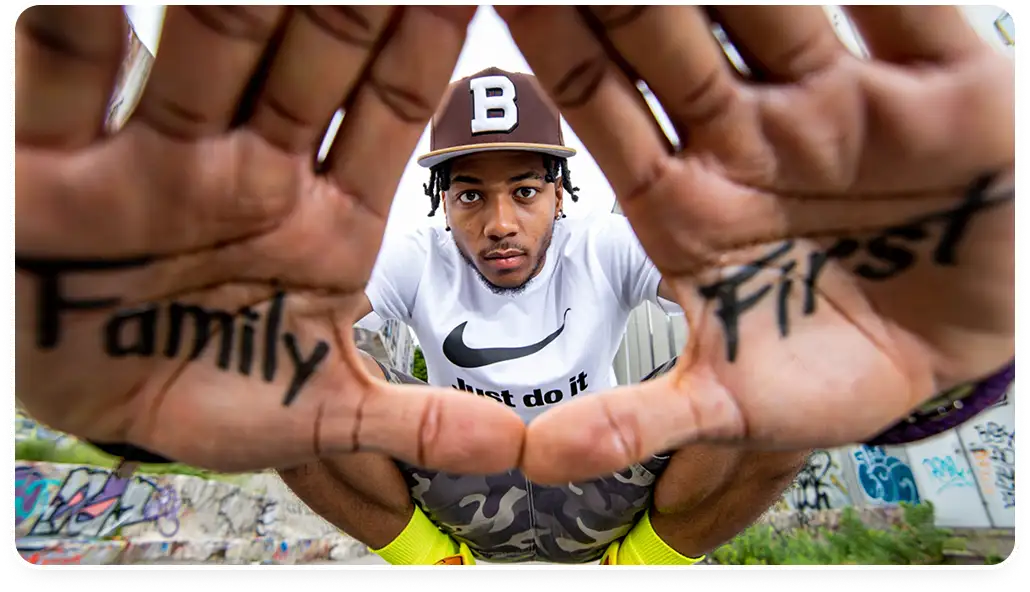Reve AI is now available in Overchat AI image generator! Let's dive in and see what this model is capable of and how it holds up against the competition.
Products
Pricing
Reve AI is now available in Overchat AI image generator! Let's dive in and see what this model is capable of and how it holds up against the competition.

In March 2025, Palo Alto-based startup Reve AI, Inc. revealed Reve Image 1.0 (codenamed "Halfmoon").
Despite how crowded the AI image generation market already is, with amazing models like Nano Banana, Qwen Image, and Seedream, Reve was an instant success.

Within weeks, it claimed the #1 spot on Artificial Analysis's Image Arena with an ELO score of 1167, overtaking Midjourney v6.1, among other competitors. But why? Let’s dive in to answer this question.
Want to test Reve yourself? You can access Reve directly on Overchat AI.
Here's a complete overview of Reve's technical specifications and capabilities:
Reve AI supports both text-to-image and image-to-image generation. That means you can create brand-new images from simple text prompts or modify existing photos by uploading them and telling the AI what you'd like to change.
Compared to many competitors, Reve takes a permissive approach to content generation.
The model can generate celebrity likenesses and recognisable public figures, and it can even produce mature content.
All outputs are provided with full commercial rights, meaning you can use Reve-generated images in any way you like. This distinguishes Reve from many other models.
Also read: Which is better Nano Banana vs. Seedream 4.0.
Reve's architecture is based on a 12-billion parameter hybrid system that combines multimodal and parallel diffusion transformer blocks, and features a unique three-component pipeline:
All of this is to say that Reve can replicate prompts very accurately.
This model features some very interesting numbers:
Speed-wise, Reve AI is blazing fast—possibly the fastest or second-fastest model available. It's a joy to work with. But what about real-world performance? We tested it across various categories to find out.
Let’s see how Reve image generator performs in three categories:

Reve AI might just be best-in-class here.
In the portrait shot, while there's some slight smoothness in the skin texture, the overall quality is exceptional — this could easily be the top image model for realistic photos.
In the landscape shot, the model rendered highly realistic details of the water and added camera noise, neither of which was part of the prompt. Slight imperfections like these make the images much more realistic; other models tend to make things too perfect.

We asked it to blur the background and unblur the subject, as if the image had been shot with a portrait lens set to an aperture of 1.8 — no other details were provided.
The model captured the depth of field perfectly.
Consider how well the individual strands of hair are blurred in the image on the right, and the slight colour fringing on the hat — neither of these features were included in the prompt.
While you can achieve comparable results with other top image models like Nano Banana, Reve AI is unique in that you can achieve these results with minimal prompting, such as "shift focus to the man" or "render the image as if shot at 1.8 f-stop".
We asked Reve to create an image of a man with graffiti in the background and to add a tattoo and the Nike tagline to his shirt.

Other models typically struggle to produce multiple text elements with distinct styles in a single generation. You might see misspelled words or letters that don't exist. However, Reve rendered all the typography very accurately.
Reve entered a market already packed with capable models. Here's how it compares to three of its main competitors:
Nano Banana is one of the most advanced AI image generation models available, and a direct competitor to Reve. At the time of writing, it is also the most widely used image generation model at Overchat AI. So, how do the two models compare?
Nano Banana tends to produce less realistic results unless the prompt is very detailed. However, both models perform similarly well in ideal conditions. That said, Reve is easier to use since it doesn't require you to write complex prompts.
Reve advantages: More realistic results, faster generation, and better prompt adherence.
Nano Banana advantages: Handles conversational editing workflows very well, meaning you can chain edits with simple commands.
Qwen Image is a 20-billion parameter model that excels at Chinese text rendering, although it is very good at general tasks. This will only be useful for most users if they need to render a lot of Chinese characters. For everything else, ReVe is better.
Reve advantages: More accurate text English and better photorealistic rendering.
Qwen advantages: Superior multilingual text support especially for Chinese characters.
Seedream 4.0 by ByteDance supports up to 4K resolution with native ultra-HD outputs. The model handles unified creation and editing in one architecture and can generate up to 9 consistent images simultaneously.
Reve advantages: Better overall prompt adherence, superior typography engine trained on more font samples, higher ELO ranking on Image Arena.
Seedream advantages: Higher native resolution (4K vs 2K), ability to generate 9 consistent images at once.
We’ve just added a new image generation model called Reve AI to Overchat AI, and it’s one of the most impressive image generators around at the moment. Reve is a text-to-image and image-to-image model that claims to achieve exceptional realism, follow prompts accurately and render text almost perfectly. We’ve tested all of these claims and can confirm that they are correct.
To test Reve AI for yourself for free, access it on Overchat AI. It's available without signing in for a limited number of generations.